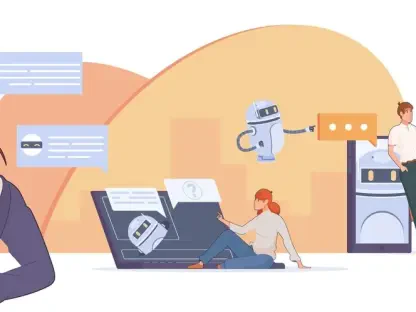In the world of software security, staying a step ahead of cyber threats is crucial, especially as new vulnerabilities continue to emerge. Recently, a significant weakness has been disclosed in WinRAR, potentially allowing attackers to bypass the Windows security mechanism known as the Mark of the Web (MotW). This newfound vulnerability, labeled CVE-2025-31334, impacts all WinRAR versions prior to 7.11 and has garnered significant attention due to its ability to enable arbitrary code execution on affected systems. Given its CVSS score of 6.8, the potential impact of this flaw is considerable, prompting an urgent need for users to understand the risks and take proactive measures.
Exploiting Symbolic Link Shortcuts
The CVE-2025-31334 vulnerability takes advantage of WinRAR’s handling of symbolic link shortcuts, ingeniously allowing attackers to bypass the MotW warnings. When users extract malicious archives containing specially crafted symbolic links, these links do not inherit the MotW flag. As a result, the execution of malicious code can occur without triggering the usual security alerts. This flaw is particularly concerning because it affords attackers the opportunity to execute harmful files under the guise of legitimate content, significantly enhancing the efficacy of their attacks.
In typical scenarios, creating symbolic links demands administrator privileges. However, if an admin account has been compromised or a system’s permissions are lax, this requirement becomes moot. Attackers can then leverage malicious archives or compromised web pages that host these weaponized files. Despite there being no confirmed active exploits of this vulnerability at this time, the method bears a striking resemblance to previous issues like CVE-2023-38831. This past vulnerability was leveraged to deploy malware such as DarkMe and Agent Tesla, highlighting the persistent and evolving nature of these cyber threats.
Mitigation Measures and Recommendations
To protect against the CVE-2025-31334 vulnerability, users are strongly encouraged to update their WinRAR software to the latest version available on the RARLAB website, which addresses this security flaw. Upgrading to version 7.11 or later is essential to thwart potential exploits. Beyond software updates, adhering to best practices in cybersecurity can provide an additional layer of defense. This includes restricting the creation of symbolic links to trusted administrators only, thereby minimizing the risk of such links being used for malicious purposes. Furthermore, users should exercise caution and avoid opening archives from sources that are not verified or trusted, as these could potentially harbor malicious content.
The discovery of this vulnerability by Taihei Shimamine of Mitsui Bussan Secure Directions and its coordination through JPCERT/CC underscore the collaborative efforts necessary to address such security concerns. The challenge lies in maintaining a balance between the functionality of archiving tools and their security, an ongoing struggle that frequently surfaces with software like WinRAR and 7-Zip. The recurrence of MotW bypass issues, as evidenced by the recent flaw CVE-2025-0411 in 7-Zip, serves as a reminder of the continuing risks and the imperative need for regular software audits, updates, and vigilance in cybersecurity practices.
The Need for Continuous Vigilance
In the realm of software security, it’s vital to stay ahead of cyber threats as new vulnerabilities continually surface. A notable weakness has been recently uncovered in WinRAR, a widely-used file compression tool, which poses a significant risk. This vulnerability, tagged as CVE-2025-31334, affects all WinRAR versions before 7.11. It enables attackers to circumvent the Windows security feature known as the Mark of the Web (MotW). This can lead to arbitrary code execution on the compromised systems, thus making this flaw extremely concerning. The vulnerability has a CVSS score of 6.8, underscoring its potential impact. Consequently, this issue has drawn considerable attention in the cybersecurity community, emphasizing the urgent necessity for users to recognize the risks and take appropriate preventive actions. To mitigate these dangers, it is imperative for users to upgrade to the latest version of WinRAR and be vigilant about their security practices to protect their systems from potential exploits.









